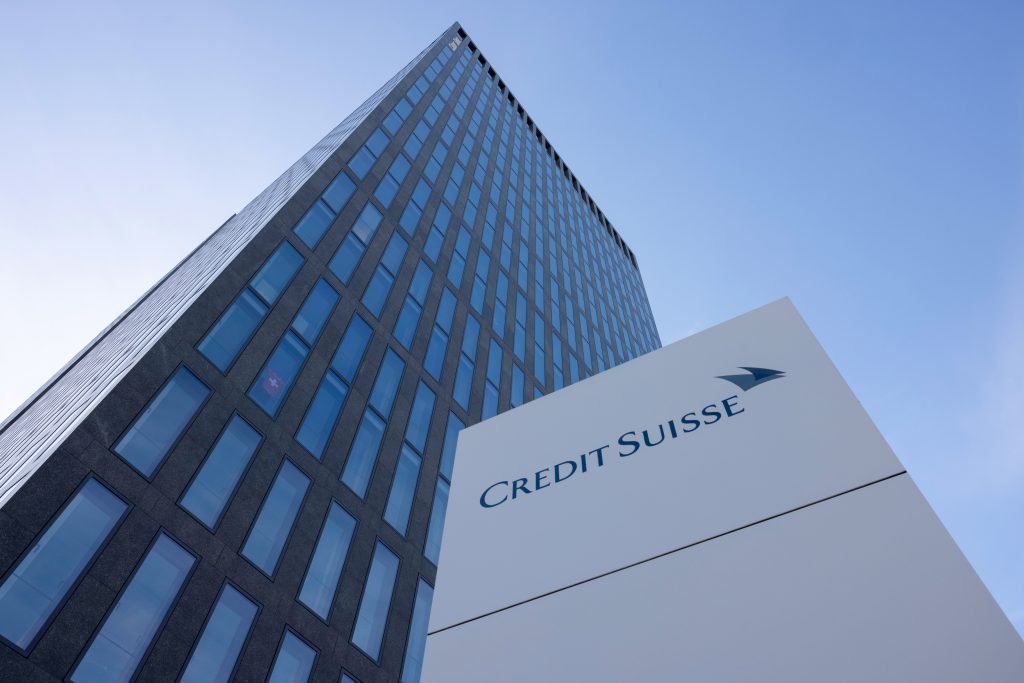Why Credit Default Swaps (CDS) Matter in a Banking Crisis
The one-year credit default swaps for Credit Suisse recently surged to record highs, indicating that the ongoing banking crisis in the U.S. had officially spread to Europe

Most people refer to volatility products like the CBOE Volatility Index (VIX) to gauge fear in the financial markets, and that’s certainly one way to do so.
However, credit default swaps (CDS) are another important indicator, as shown by the panic that recently engulfed Credit Suisse (CS).
On March 15, the one-year credit default swaps associated with Credit Suisse shot to record highs, indicating that the cost to insure the company’s risk of default had spiked in sharp fashion.
Last month, the one-year credit default swaps for Credit Suisse were trading at about 200, meaning it would cost an investor about $2 to insure $100 worth of Credit Suisse debt ($100 x 2% = $2).
By March 15, those same one-year CDS were trading at nearly 3,500, indicating that $35 would now be required to insure $100 worth of Credit Suisse debt ($100 x 35% = $35).
For reference, the one-year CDS for Lehman Brothers climbed to roughly 950 shortly before the company went bust back in October 2008, as illustrated below.
The price of Credit Suisse stock has sunk so low (approximately $2/share) that it is no longer an efficient barometer of risk in the company. Instead, investors and traders can use metrics like implied volatility in the company’s options, or the aforementioned spreads in credit default swaps to assess risk sentiment in the company.
To avert a Lehman-like outcome, the Swiss National Bank (SNB) extended a lifeline to Credit Suisse shortly after the company’s credit default swaps surged into distressed territory. On March 16 the Swiss National Bank loaned Credit Suisse approximately $54 billion, and referred to it as a “decisive action to preemptively strengthen [the company’s] liquidity.”
That development was warmly welcomed by the global financial markets, which moved mostly higher in the wake of the news.
Credit Suisse has been around since 1856, and is categorized as a “systemically important bank.” There are roughly 30 global banks that carry that label, including the Bank of China, J.P. Morgan Chase (JPM) and Bank of America (BAC).
The ABCs of credit default swaps
In simple terms, the two parties involved in a credit default swap (CDS) are exchanging the risk that a credit instrument will go into default. CDS are technically categorized as a form of derivative.
When purchasing a CDS, the buyer agrees to make periodic payments to the seller. In return, the seller agrees to make a lump sum payment to the buyer if the underlying credit instrument enters default, as illustrated below.
Source: AnalystPrep.com
In many instances, the buyer of a CDS may also own the underlying credit instrument and is using the CDS as a type of insurance. In other cases, the buyer may have no exposure to the underlying credit instrument and is simply making a bet against a company’s ongoing ability to pay its debts.
In either case, one can see why credit default swaps are so sensitive to ever-changing perceptions in the market. When a company’s creditworthiness is called into question—like Credit Suisse in mid-March—that often results in a surge in demand for the company’s CDS, which pushes up the cost of insuring that company’s debt.
Interestingly, the CDS market is often used to mitigate risk, but the CDS market can also open buyers and sellers of CDS to new risks, as well. For example, what if the seller of a CDS isn’t able to make good on its promise to pay in the event of a default?
Excessive risk-taking in the CDS market served to undermine the financial system back in the early part of the 21st century, and created a domino effect in the financial services sector during the 2008-2009 Financial Crisis, known as the Great Recession.
At the end of 2007, the overall global CDS market was estimated at roughly $60 trillion, which was roughly three times the size of the U.S. stock market. Due to the unusually high number of corporate defaults that occurred during the Financial Crisis, many of the financial companies trading heavily in CDS were also driven into bankruptcy.
For example, the U.S. government was forced to lend the American International Group (AIG) roughly $85 billion because it had sold nearly $500 billion worth of credit default swaps.
Back then, the CDS market was mostly unregulated, which meant there was little transparency in the market. That was quickly remedied in the wake of the financial crisis as a part of the Dodd-Frank Act.
These days, the Securities and Exchange Commission (SEC) and the Commodity Futures Trading Commission (CFTC) are responsible for regulating the over-the-counter swaps market, which includes CDS.
By 2019, the total value of the global CDS market had shrunk to roughly $8 trillion, which is far less than the $60 trillion worth of CDS exposure that was at risk amid the 2008-2009 Financial Crisis. As of 2023, the CDS market sits at roughly $10 trillion in gross notional exposure.
To follow everything moving the markets on a daily basis, check out tastylive, weekdays from 7 a.m. to 4 p.m. CDT.
Sage Anderson is a pseudonym. He’s an experienced trader of equity derivatives and has managed volatility-based portfolios as a former prop trading firm employee. He’s not an employee of Luckbox, tastylive or any affiliated companies. Readers can direct questions about this blog or other trading-related subjects, to support@luckboxmagazine.com.



















